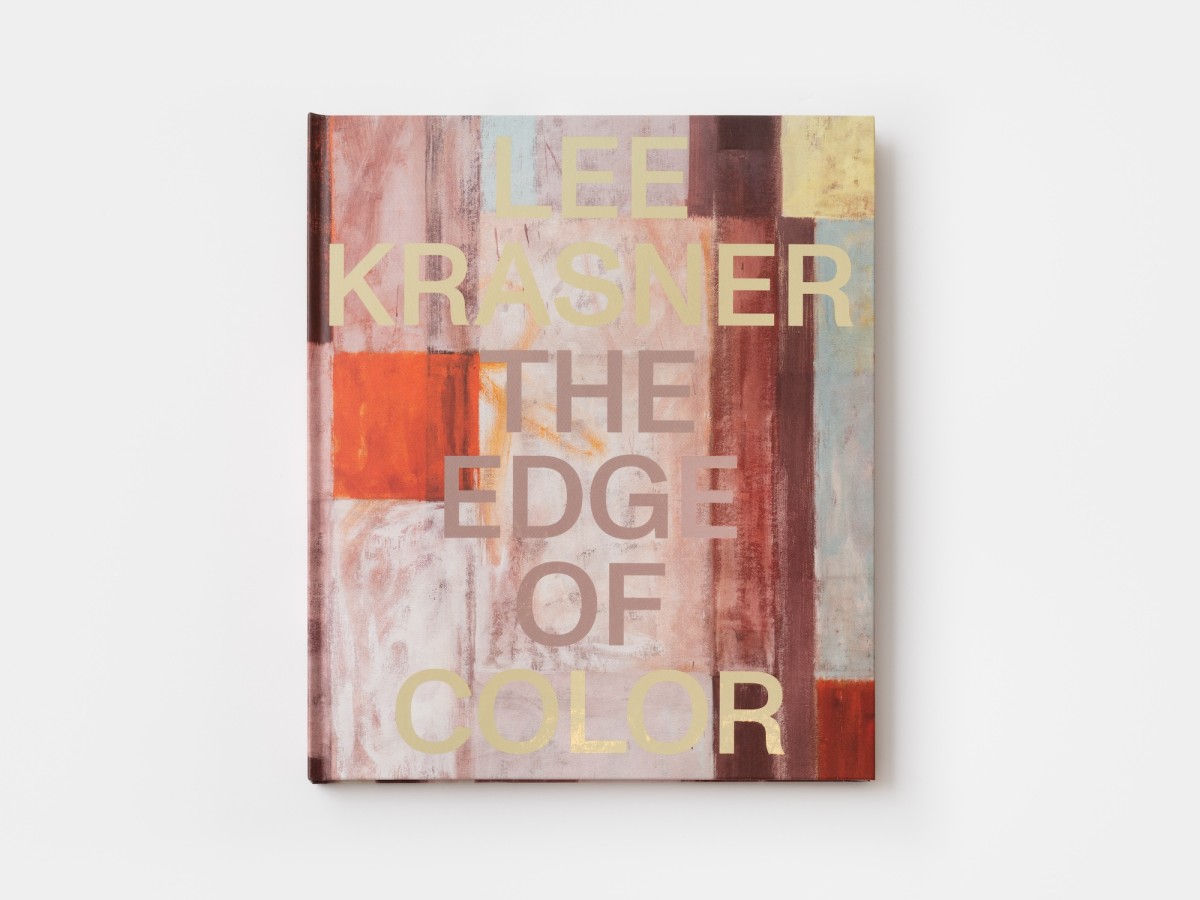Lee Krasner: The Edge of Color, Geometric Abstractions 1948–53
-
-
“I merge what I call the organic with what I call the abstract, which is what you are calling the geometric.”
—Lee Krasner -
 Lee Krasner, New York, c. 1940. Photo: Maurice Berezov. © A.E. Artworks, LLC
Lee Krasner, New York, c. 1940. Photo: Maurice Berezov. © A.E. Artworks, LLC -

-

-

-

-
 Lee Krasner with Untitled in Springs, New York, August 1953. Photo: © Tony Vaccaro Archives
Lee Krasner with Untitled in Springs, New York, August 1953. Photo: © Tony Vaccaro Archives -

-

-

-

-

-

-

-

-

-
On loan from the Carolyn Campagna Kleefeld Contemporary Art Museum, Gothic Frieze (1950) documents Krasner’s transition from her “Little Images” toward geometric imagery in the early 1950s. On view in New York for the first time in over 40 years, the work relates to a series of frieze-like “Personage” paintings that Krasner destroyed before ever exhibiting publicly—a series only known through studio photographs taken by Hans Namuth in Summer 1950. This work’s linear forms and somber palette anticipate major paintings like Gothic Landscape (1961, Tate), part of Krasner’s explosive “Umber” series created in the wake of her husband Jackson Pollock’s death in 1956, examples of which were presented at Kasmin in 2017.
Kasmin Books will publish a fully-illustrated catalogue featuring new texts by Adam D. Weinberg, Director Emeritus of the Whitney Museum of American Art, and Jason Drill, Head of Research at Kasmin, replete with color plates, never-before-seen content, and related archival material in early 2024.
Previous solo exhibitions of Krasner’s work at Kasmin include Lee Krasner: Collage Paintings 1938-1981 (2021, catalogue), Lee Krasner: Mural Studies (2018), and Lee Krasner: The Umber Paintings, 1959-1962 (2017–18, catalogue). In 2021, the gallery presented a solo presentation of Krasner’s charcoal drawings at Art Basel in Basel, accompanied by a definitive catalogue. -
Publications
-
About the Artist

-
Join our Newsletter
* denotes required fields
We will process the personal data you have supplied in accordance with our privacy policy (available on request). You can unsubscribe or change your preferences at any time by clicking the link in our emails.
-
Explore
-
Explore
- Diana Al-Hadid
- Alma Allen
- Theodora Allen
- Sara Anstis
- Ali Banisadr
- Tina Barney
- Judith Bernstein
- JB Blunk
- Mattia Bonetti
- William N. Copley
- Cynthia Daignault
- Ian Davenport
- Max Ernst
- Liam Everett
- Leonor Fini
- Barry Flanagan
- Walton Ford
- Jane Freilicher
- vanessa german
- Daniel Gordon
- Alexander Harrison
- Elliott Hundley
- Robert Indiana
- Lee Krasner
- Les Lalanne
- Matvey Levenstein
- Lyn Liu
- Robert Motherwell
- Jamie Nares
- Nengi Omuku
- Robert Polidori
- Jackson Pollock
- Elliott Puckette
- Alexis Ralaivao
- George Rickey
- James Rosenquist
- Mark Ryden
- Jan-Ole Schiemann
- Joel Shapiro
- Bosco Sodi
- Dorothea Tanning
- Naama Tsabar
- Bernar Venet


















